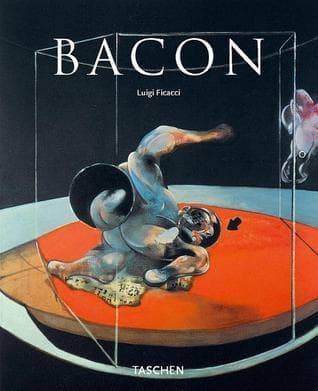
Book Review Summary: Francis Bacon: 1909-1992
Introduction
Francis Bacon (1909-1992) was a British painter known for his powerful and provocative art. In the book "Francis Bacon: 1909-1992," author Luigi Ficacci delves into Bacon's life, work, and influences. This article provides a summary of the book, highlighting the author's insights, readers' opinions, and recommendations.
About Luigi Ficacci
Luigi Ficacci is an author and art historian who has written extensively on modern and contemporary art. He has a deep understanding of the art world and brings his expertise to the analysis of Francis Bacon's work in this book. Ficacci provides readers with a comprehensive understanding of Bacon's artistic style, techniques, and influences, shedding light on the artist's unique approach to painting.
Analysis of Views
-
Beautiful Illustrations: Many readers praised the book for its beautiful illustrations, which showcase Francis Bacon's paintings in stunning detail. The high-quality images allow readers to appreciate the artist's skill and creativity.
-
Insightful Commentary: Readers found the book insightful, as it provides a deeper understanding of Bacon's work and the inspiration behind his paintings. The author delves into the artist's influences and explores the themes and emotions that drive his art.
-
Academic Writing Style: However, some readers expressed frustration with the author's writing style. They felt that the writing was convoluted, verbose, and overly academic. The repetitive nature of the prose and the use of long, impressive-sounding words were seen as obstacles to understanding and appreciating the book's content.
-
Lack of Clarity: A few readers felt that the book lacked clarity in its analysis of Bacon's work. They felt that the author's writing was too dense and failed to convey the artist's techniques or inspirations effectively. Some readers found it difficult to grasp the author's points and felt that they were left with more questions than answers.
-
Biographical Context: Readers who were interested in learning about Bacon as a person were disappointed by the limited biographical information provided in the book. They felt that more context about Bacon's life and background would have added depth to their understanding of his art.
Reasons for Recommendation
-
Beautiful Illustrations: The stunning illustrations in the book make it a valuable resource for anyone interested in Francis Bacon's art. The high-quality images allow readers to appreciate the artist's skill and creativity, making it a recommended purchase for art enthusiasts.
-
Insightful Commentary: The author's insightful commentary on Bacon's work provides readers with a deeper understanding of the artist's techniques, inspirations, and themes. The book offers a comprehensive analysis of Bacon's art and is recommended for those looking to learn more about his artistic style and influences.
-
Comprehensive Overview: The book offers a comprehensive overview of Francis Bacon's life and work, making it a valuable resource for anyone interested in modern art history. Readers appreciate the author's extensive knowledge and expertise, which enhance their understanding of Bacon's place within the art world.
Reasons for Not Recommendation
-
Academic Writing Style: Some readers found the author's writing style to be overly academic and convoluted, which detracted from their enjoyment of the book. The repetitive nature of the prose and the use of long, impressive-sounding words made it difficult for some readers to understand and appreciate the content effectively.
-
Lack of Clarity: A few readers felt that the book lacked clarity in its analysis of Bacon's work. They found the author's writing to be dense and difficult to follow, making it challenging to grasp the artist's techniques or inspirations. The lack of clarity was seen as a significant drawback by some readers.
Conclusion
"Francis Bacon: 1909-1992" by Luigi Ficacci offers a comprehensive exploration of the life and work of one of the 20th century's most influential painters. While some readers appreciate the beautiful illustrations and insightful commentary provided by Ficacci, others find the academic writing style overly convoluted and lacking in clarity. The book provides a comprehensive overview of Bacon's life and work, making it a valuable resource for those interested in modern art history. However, readers who prefer clear explanations and concise writing may find this book less engaging due to its dense prose and repetitive nature. Overall, "Francis Bacon: 1909-1992" offers an interesting perspective on an artist who has captivated generations with his haunting, distorted figures and challenging artistic style.